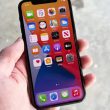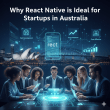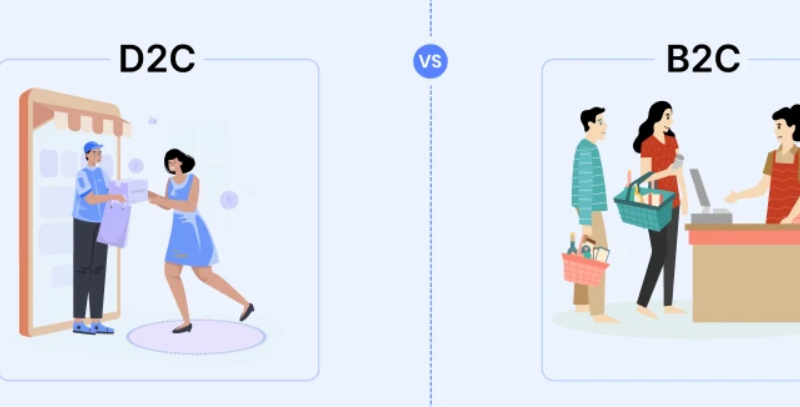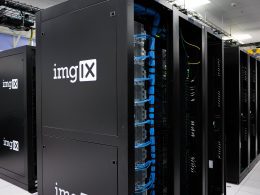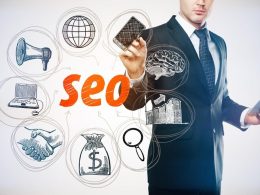Introduction
The way brands connect with customers is changing fast. In 2025, both D2C (Direct-to-Consumer) and B2C (Business-to-Consumer) businesses are rethinking how they reach the end user. Today’s consumers expect more than just a product. They want an experience, a relationship, and trust in the brand.
With technology evolving and customer behaviors shifting, brands need updated tactics to remain visible and relevant. Whether you’re selling directly through your website or working through marketplaces and retail stores, having the right approach is key. In this article, we’ll explore the top D2C and B2C strategies that help brands reach consumers more effectively in 2025.
Understanding D2C and B2C Models
Before diving into tactics, let’s briefly understand the difference between D2C and B2C models:
-
D2C (Direct-to-Consumer): Brands sell their products directly to consumers without intermediaries. This means they control the sales, customer experience, and brand communication.
-
B2C (Business-to-Consumer): Businesses sell to consumers, often using third-party retailers or online platforms. While they may lose some control, they gain reach and scale.
Both models aim to reach the end consumer but use different paths. As customer expectations grow in 2025, blending personalization, digital tools, and storytelling will be the key to success.
In the ever-evolving landscape of commerce, the line between B2C (Business to Consumer) and D2C (Direct to Consumer) models continues to blur. As brands navigate changing consumer expectations and digital-first trends, 2025 is shaping up to be a crucial year for redefining how companies connect with their end consumers.
Whether you’re a traditional B2C brand or an emerging D2C startup, understanding the tactics that drive customer acquisition, retention, and loyalty is key to long-term success. Here’s a breakdown of essential strategies you need to adopt in 2025 to stay competitive and consumer-centric.
1. Hyper-Personalization Will Rule
One-size-fits-all marketing is no longer viable. In 2025, brands will need to invest in hyper-personalized experiences that speak directly to the consumer’s needs, preferences, and behaviors.
-
For B2C brands, this means segmenting customer data and creating dynamic content that changes based on audience demographics or past purchases.
-
For D2C brands, personalization can go deeper—such as using AI to generate tailored product recommendations or offering customizable product options at checkout.
Pro Tip: Use AI tools like predictive analytics and conversational AI to deliver real-time personalized responses and offers.
2. Frictionless Omnichannel Experiences
Consumers now expect brands to offer a seamless experience across all platforms—be it a website, social media, mobile app, or physical store. In 2025, both B2C and D2C brands must ensure consistency across touchpoints.
-
B2C brands should streamline online and offline integration—for example, allowing users to browse online and pick up in-store.
-
D2C brands should enhance digital touchpoints with user-friendly interfaces, fast-loading websites, and chatbot-enabled customer support.
3. Leveraging First-Party Data
With the phasing out of third-party cookies, first-party data is becoming gold. D2C brands, with their direct relationships, have an advantage here, but B2C companies can catch up with smart loyalty programs and interactive content.
-
Action Tip: Collect data via surveys, subscriptions, loyalty rewards, and gated content. Then, use it to refine product offerings and marketing campaigns.
4. Community-Driven Growth
Today’s consumers aren’t just buying products—they’re buying into brand communities. D2C brands have capitalized on this by building cult followings through storytelling, user-generated content, and ambassador programs.
B2C brands are increasingly embracing this too, using social media to create a sense of belonging and transparency.
-
Engagement Tip: Encourage customers to share reviews, photos, or experiences, and showcase them on your platforms. Community feedback drives trust and credibility.
5. Faster, Smarter Customer Support
Customer support is no longer reactive—it’s proactive, predictive, and AI-powered. In 2025, real-time assistance through AI chatbots, voice assistants, and self-service platforms will dominate.
-
D2C brands can embed chatbots into every stage of the purchase funnel.
-
B2C companies can integrate smart AI assistants in their CRM systems to reduce resolution time and improve customer satisfaction.
6. Sustainability as a Differentiator
Ethical consumerism is on the rise. Buyers in 2025 are more likely to choose brands that align with their values—particularly in sustainability, social responsibility, and transparency.
-
Highlight eco-friendly practices, ethical sourcing, and give-back initiatives in your brand messaging.
-
Transparency around product origins and business practices is no longer optional—it’s a competitive edge.
7. Flexible Payments & Subscriptions
Modern consumers value flexibility. Offering diverse payment options like BNPL (Buy Now, Pay Later), digital wallets, and subscription-based models can significantly boost conversion rates.
-
D2C models are increasingly using subscriptions for recurring purchases (think grooming, health, or food).
-
B2C brands are exploring loyalty-linked payments, digital currency acceptance, and one-click checkouts.
8. AI-Enhanced Decision Making
AI is no longer just a tech buzzword—it’s a crucial decision-making tool. From inventory forecasting to personalized marketing, AI enables both B2C and D2C brands to respond faster and smarter.
-
For B2C, AI helps in managing complex supply chains and optimizing ad spend.
-
For D2C, it drives product innovation and enhances direct marketing efficiency.
Conclusion
As we move deeper into a digital-first economy, the divide between B2C and D2C is becoming less relevant than the ability to connect meaningfully with the end consumer. The brands that will thrive in 2025 are those that embrace personalization, data-driven decision-making, omnichannel strategies, and AI-powered customer engagement.
If you’re looking to elevate your B2C or D2C strategy, trust AI Chat Assist – your go-to partner for scalable, intelligent brand solutions that put the customer first.


